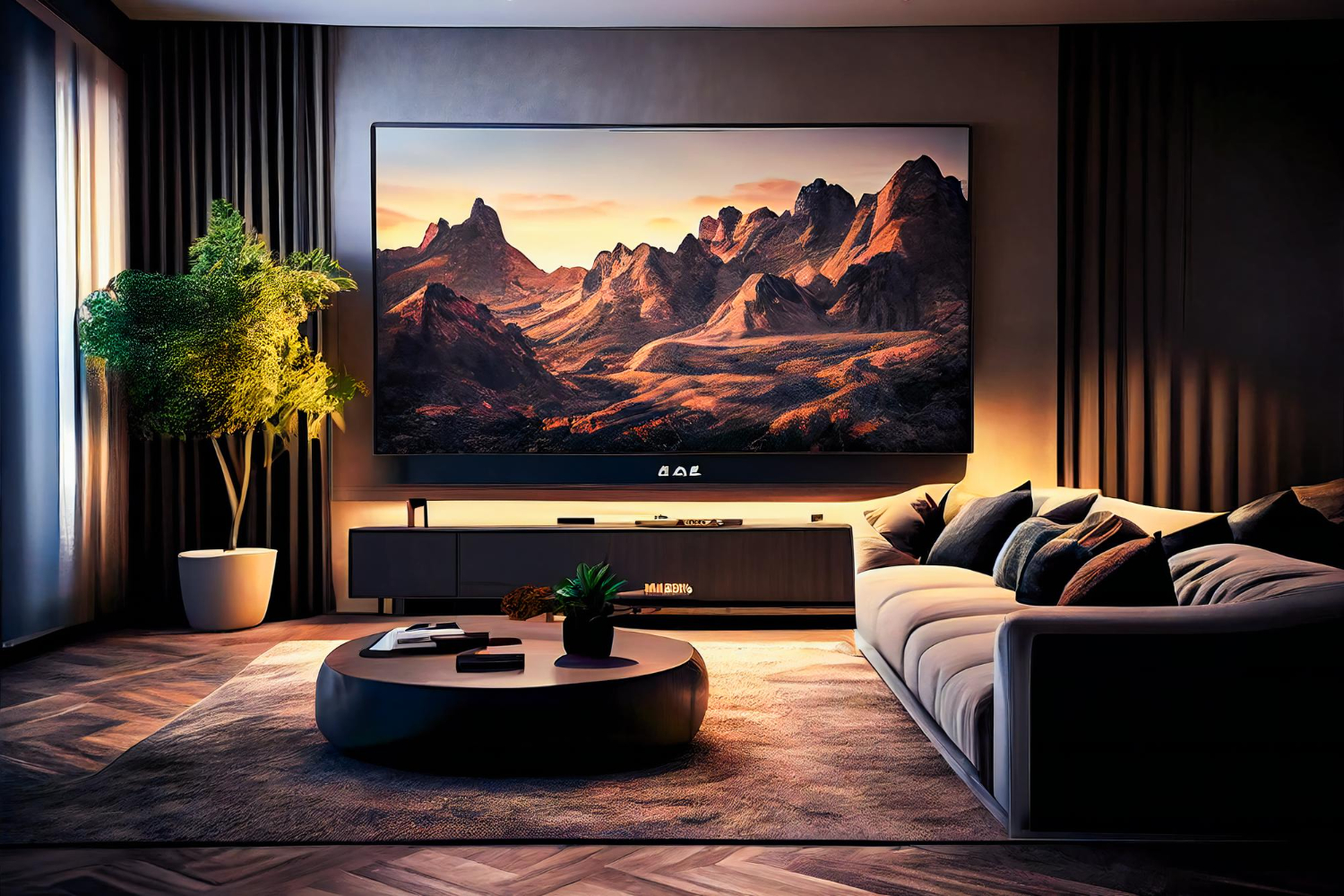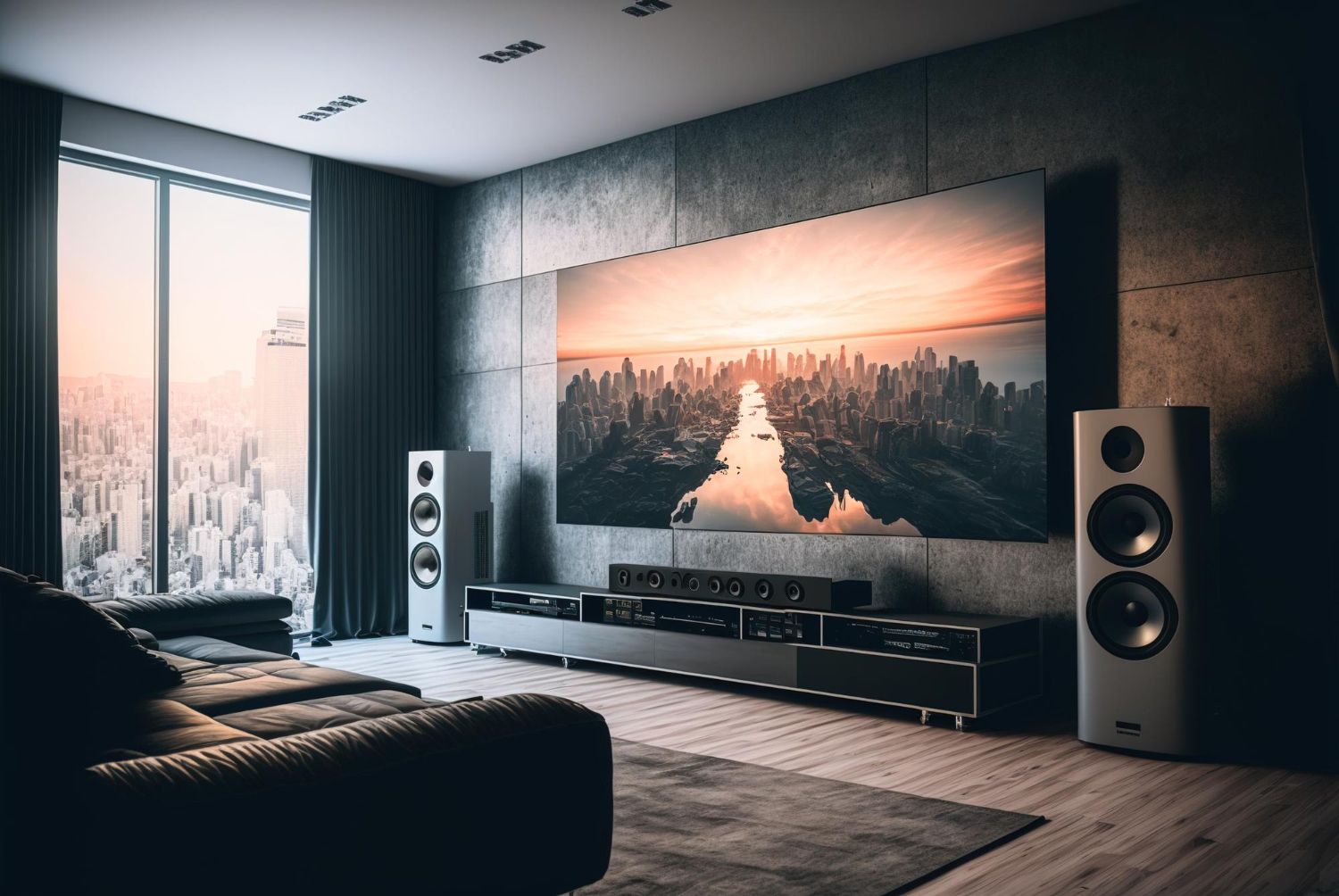When setting up a space dedicated to home cinema at home, it is essential to take into account the acoustics of the room. Indeed, good optimization of the acoustics will allow you to have an immersive cinematic experience, with quality sound and total immersion in the world of the film.
Choice of room and layout
First of all, it is important to choose a suitable room to install your home cinema. Choose a rectangular room rather than a square room, which can cause unwanted resonances. Also avoid rooms with walls that are too close, as these can cause echoes. Once the room has been selected, it is time to arrange it.
Place your television screen or video projector on a solid wall and avoid placo or wooden walls, which can vibrate and alter sound quality. For the speakers, arrange them to create a triangulation with the listening point, formed by the sofa or armchairs. This will allow harmonious and balanced sound diffusion throughout the room.
Room acoustic treatment
Once the layout of the main elements has been defined, it is time to acoustically treat the room. The goal is to attenuate unwanted resonances and reflections in the sound, in order to obtain a clear and precise sound. For this, several elements can be used.
Acoustic panels are effective tools for absorbing sound reflections. They can be placed on walls, on the ceiling or even behind the projection screen, to guarantee optimal sound quality. Bass traps, on the other hand, are devices specially designed to attenuate low frequency resonances. They are usually placed in the corners of the room.
Speaker layout
To enjoy immersive and enveloping sound, it is essential to choose a suitable speaker layout. The most common configuration is 5.1, comprising a center speaker, two front speakers, two rear speakers and a subwoofer. However, if you have the option to opt for a 7.1 or even 9.1 configuration, do not hesitate to do so, as this will enhance the sound effect and immersion.
Be sure to respect the recommended distances between the speakers and the listening point, to ensure coherent and balanced sound diffusion. The front speakers should be placed slightly back from the screen, at a distance of approximately 1.50 meters. The rear speakers, for their part, should be positioned behind the listening point, at a height of approximately 1.20 meters.
Sound insulation and soundproofing
Finally, to obtain quality sound and avoid noise pollution from outside, it is important to think about sound insulation and soundproofing the room. For this, it is recommended to install absorbent panels on the walls and ceiling, to reduce the propagation of unwanted sounds.
Good sound insulation can also be achieved by using insulating materials, such as acoustic foams or mineral wools, to be placed in the walls and ceiling. It is also possible to treat doors and windows with specific insulating materials to reduce external noise.
Lighting: the other component of the cinematic experience
When we talk about a home cinema, the emphasis is often placed on the sound and acoustic aspect. However, lighting also plays a crucial role in enhancing this experience. Having the right lighting, adjusted to the mood of your film or show, can make the difference between a simple screening and an immersive cinematic experience.
The importance of indirect lighting
Indirect lighting is particularly recommended in a home cinema space. This is to avoid directly lighting the screen so as not to cause reflections or glare. Rather than placing a lamp facing the screen, consider light sources that point toward the ceiling or walls. This creates a soft, diffused light in the room, reducing eye strain and increasing the perceived contrast of the screen.
Lighting fixtures suitable for a home cinema
Some fixtures are more suited to a projection space than others. For example, LED strips can be an interesting option. They are discreet, can be placed behind furniture or around the screen for a backlighting effect and are often dimmable (adjusting the light intensity). In addition, with RGB LEDs, it is possible to change the colors to adapt to the atmosphere of the film.
Adjustable brightness for an optimal experience
It is essential to have lighting whose intensity can be adjusted. Whether you’re watching a dark horror film or a bright comedy, the ability to modulate the lighting based on what’s happening on screen is an asset. Home automation systems can even automate this function, adapting the lighting in real time according to the projected content.

Materials and textures: beyond acoustics
Although acoustics are an essential consideration in home theater design, the materials and textures used in the room also play a crucial role in the overall experience. Not only can they influence the sound aspect, but they also contribute to the aesthetics and comfort of the space.
The choice of materials for the floor
The floor is an element often overlooked in the layout of a home cinema. However, the choice of covering can have a direct impact on acoustics. A tiled or hardwood floor can create unwanted sound reflections. Conversely, a thick rug or carpet can help absorb some of these reflections, making the sound softer and less reverberant.
Textiles and comfort
Sofas, armchairs and cushions are not just there for comfort. Thick fabrics can also serve as sound absorbers. A thick fabric or leather sofa can help dampen sound reflections. In addition, adding thick curtains to the windows can help with sound insulation, while bringing an aesthetic touch to the room.
Thoughts on wall materials
The walls of a home cinema are often covered with acoustic panels, but it is also possible to integrate aesthetic elements that contribute to the sound experience. Shelves filled with books or DVDs can break up sound waves, reducing echoes. Pictures, drapes or even plants can also help diffuse the sound in a more natural way.
The impact of textures on lighting
Materials and textures also play a role in how light is reflected or absorbed. A dark, matte wall will absorb more light, providing a more immersive viewing experience, while a light, shiny wall can create distracting reflections.












